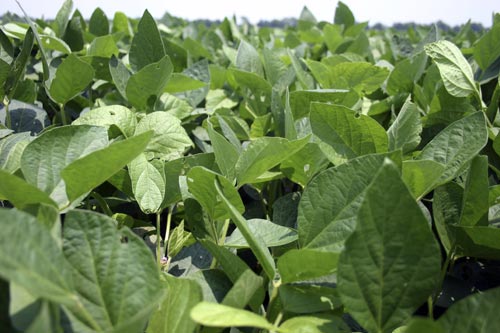July 12, 2011

Last week we saw increased larval numbers in many fields, particularly in the southern half of the state. Whether it’s late planted beans, blooming beans, cotton, or milo, you had better get out and scout your crop. Believe it or not, our trap counts have not peaked yet. Louisiana and Mississippi are also experiencing higher than normal numbers of bollworms. We are in a rolling population right now, and the rest of July has the potential for high bollworm numbers.
If you have soybeans that are beginning to bloom and have not lapped or reached canopy closure, these are the fields most often targeted and where you should begin checking. However, as we’ve learned the past couple of years, they will also infest small late-planted beans and even beans that are lapped, so all fields should be checked closely.
Our threshold in blooming beans is 9 bollworms (1/2 inch or greater) per 25 sweeps. We say 1/2 inch or greater for two reasons; first, this allows natural enemies to take their toll and keep numbers down; secondly, the larvae cause very little damage until they get up to 3/4 to 1 inch in size. Also, bollworms are easier to kill in crops like soybean and milo compared to cotton because they are so exposed to insecticides.
In beans not yet blooming, the threshold is the same as for all defoliators, 35-40% defoliation.
In milo, the threshold is 2 bollworms per head, again 1/2 inch in size or greater. In conventional cotton, the threshold is 6 eggs or small larvae/14 row feet. In Bollgard II and WideStrike cotton, the threshold is 3 medium size larvae on 14 ft.
In soybeans, you have several options for control when thresholds are met. Pyrethroids are our standard for control. Just make sure the pyrethroid you use is labeled. Asana, Baythroid, Declare, Karate, Mustang Max (and comparable generics) are all labeled for use and should provide adequate control of populations at or near threshold. Remember, last year in high populations, we had better levels of control by tankmixing Orthene at 0.5 lb/A with the pyrethroid. By the way, cypermethrin is not labeled in soybean. The issue with these products is that they will wipe out beneficial insect populations.
Other products such as Belt and Steward will provide good control and save beneficials, but the cost will be higher. Control with Steward at 1 gal/20 acres and with Belt at 2 oz/A was very good last year and cleaned up some big numbers. Do some cost comparisons and pick the product that best fits your needs.
In milo, a labeled pyrethroid will also knock out sorghum midge and those pesky rice stink bugs that are showing up and should be the product of choice.
In conventional cotton, avoid straight pyrethroids. If there are a lot of budworms out there, consider the new insecticides: Belt (3 oz/A)and Prevathon (20-27 oz/A). They provide excellent control and very good residual control.
In Bollgard II and WideStrike, a pyrethroid should provide good control. If you have plant bugs too, consider tankmixing a labeled pyrethroid plus Orthene or Bidrin in blooming cotton, to achieve control of the pest complex.
You May Also Like




